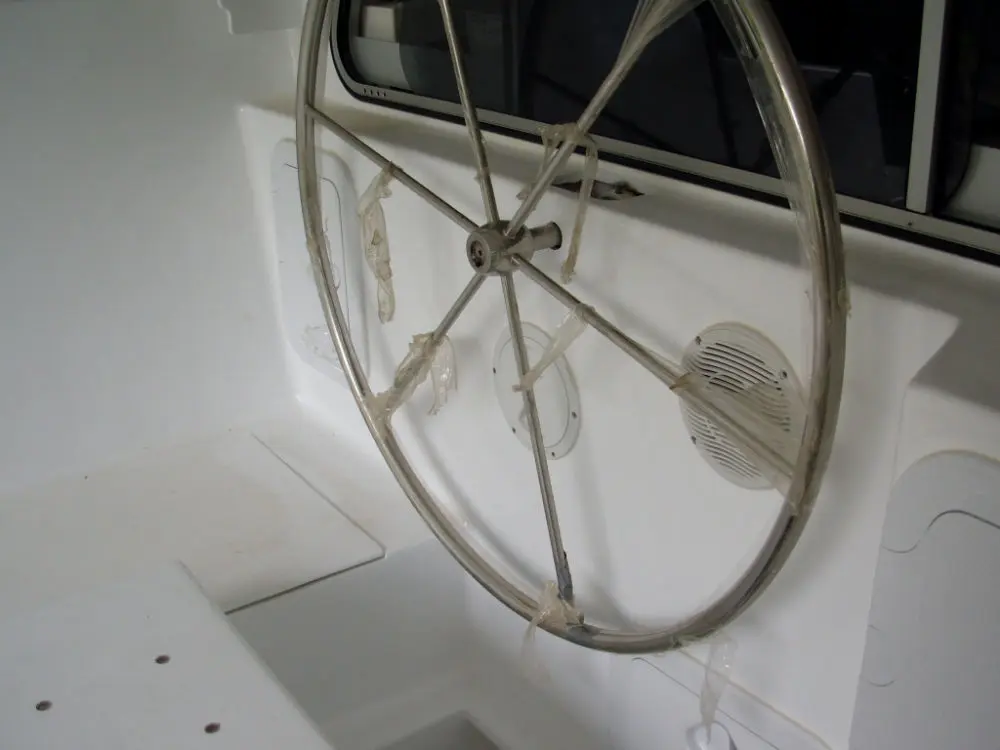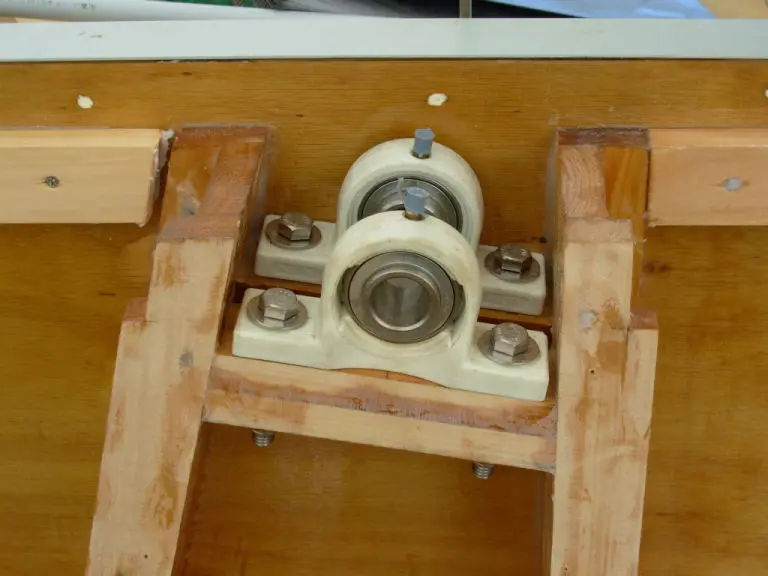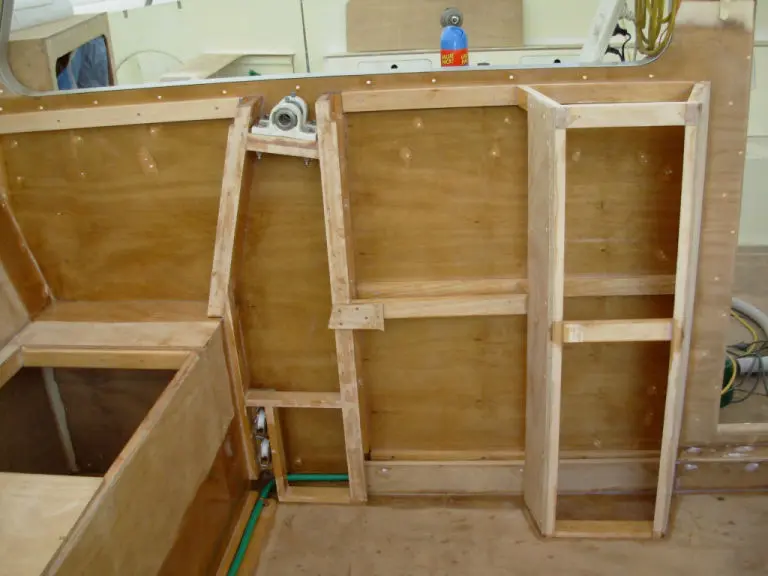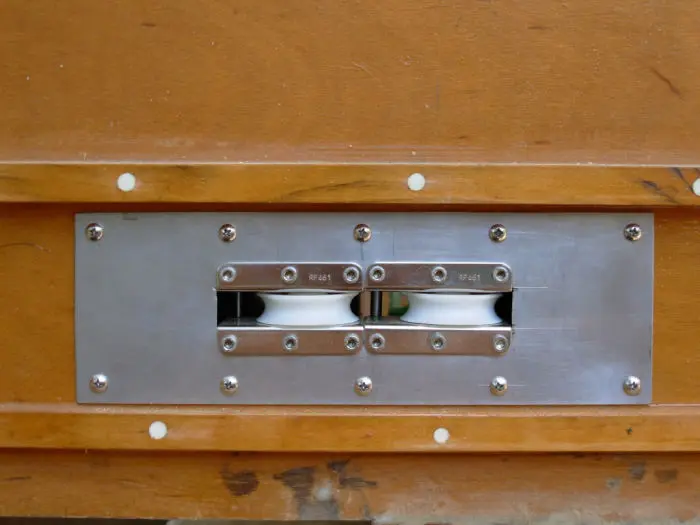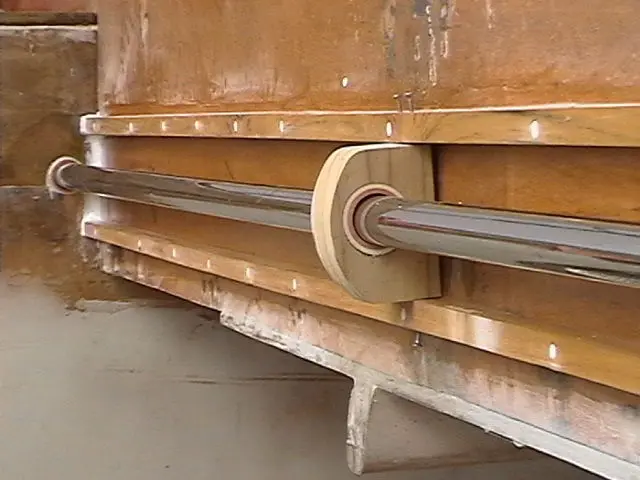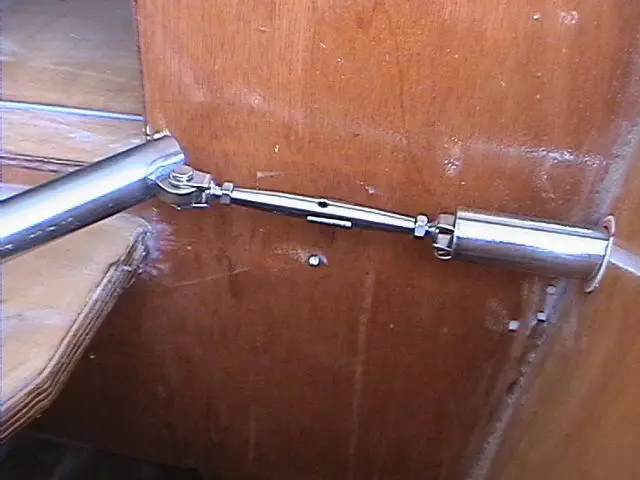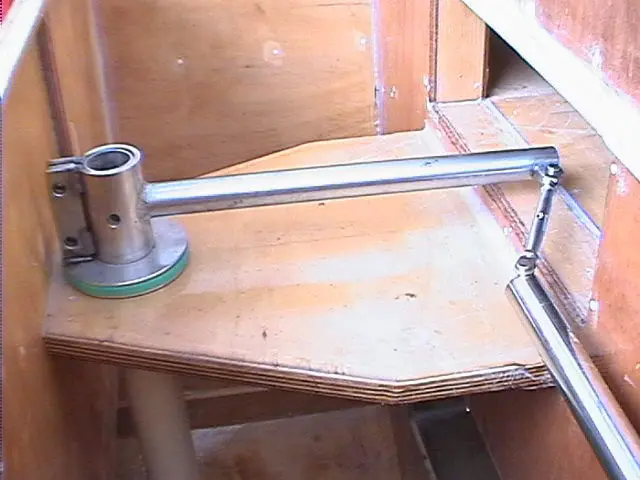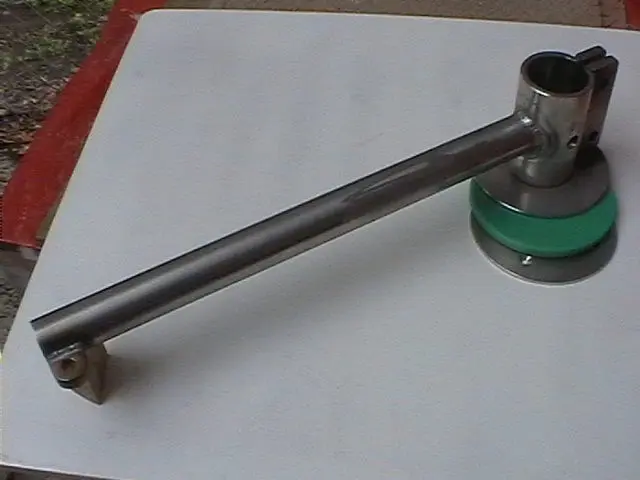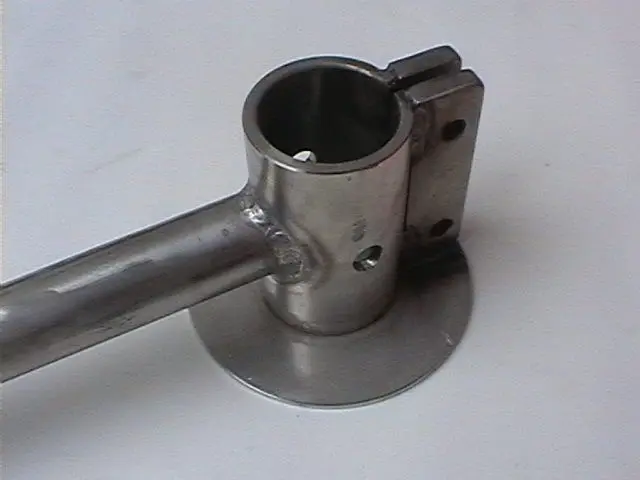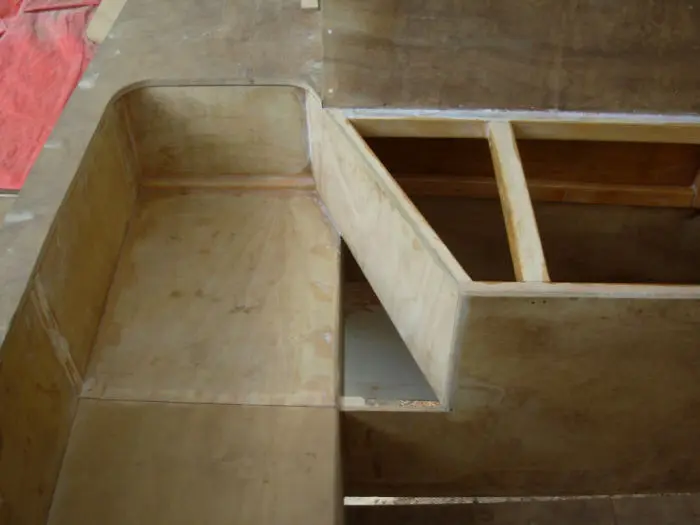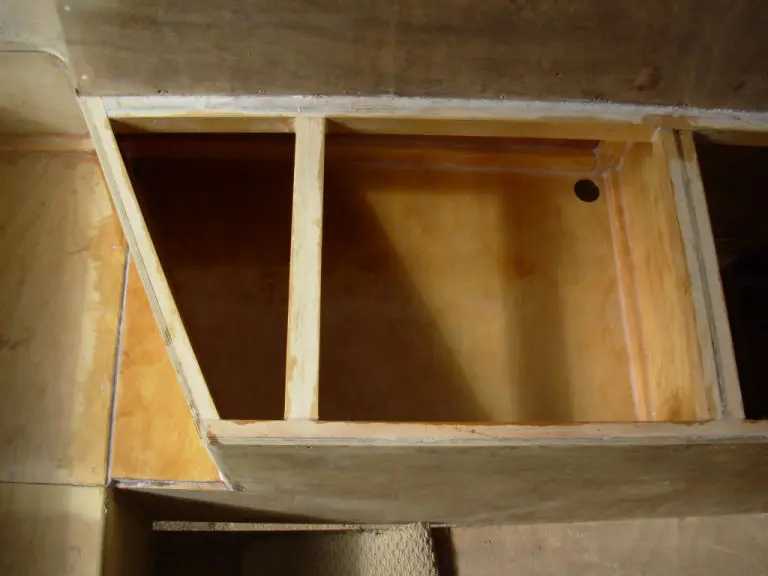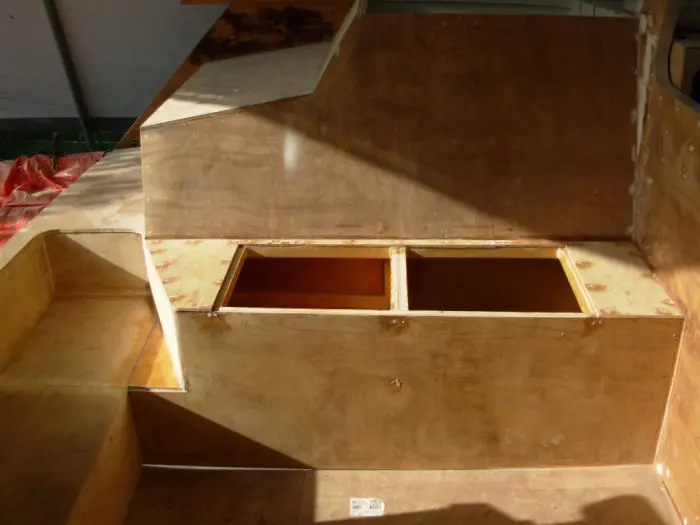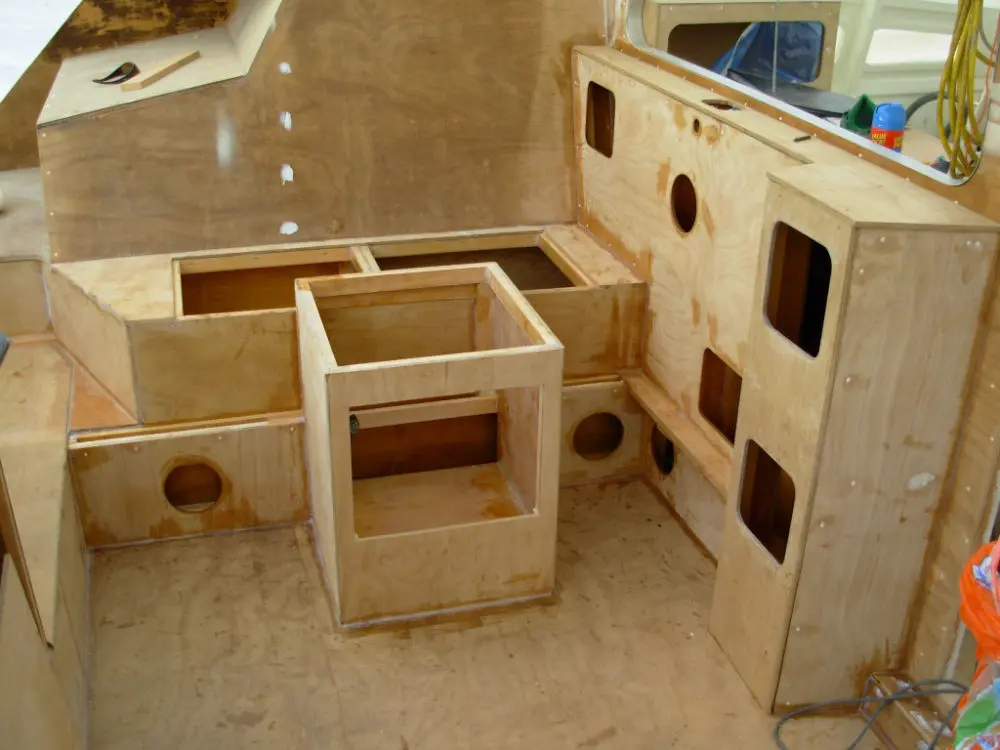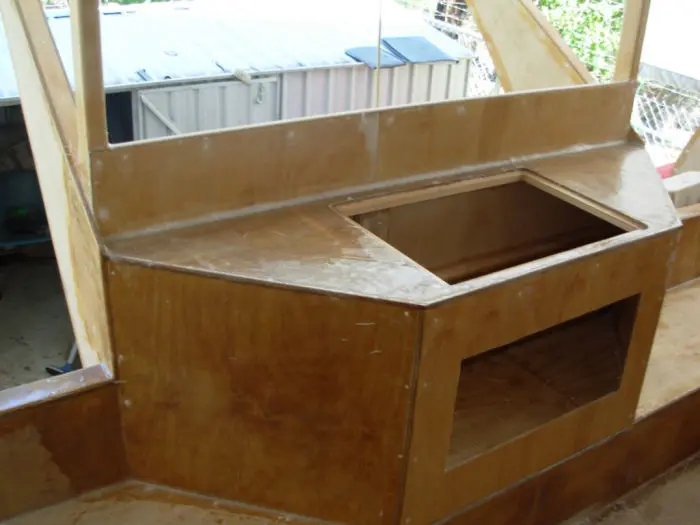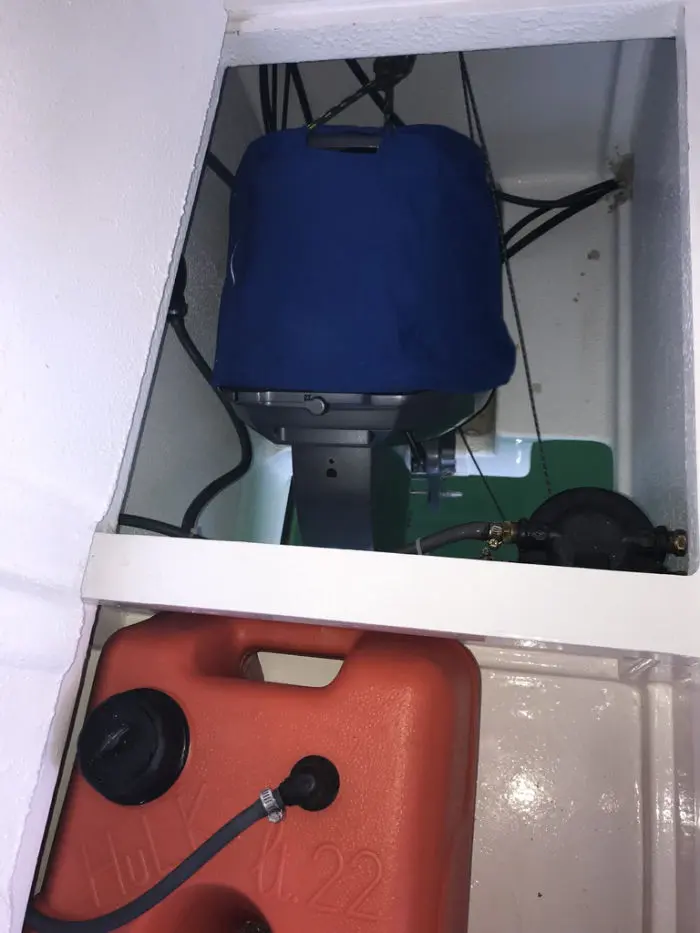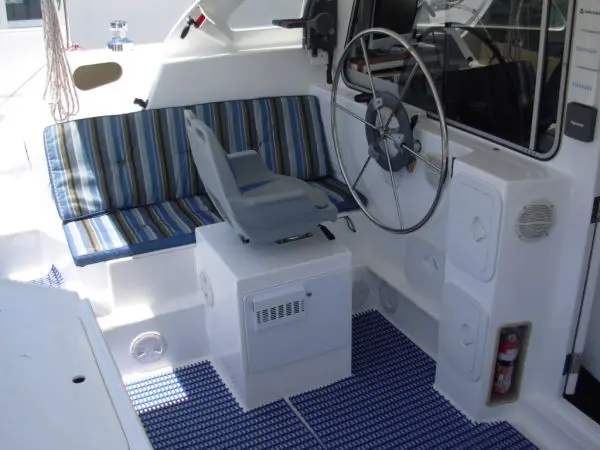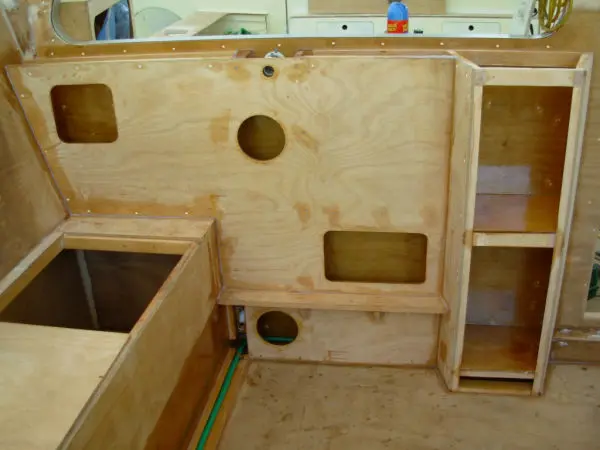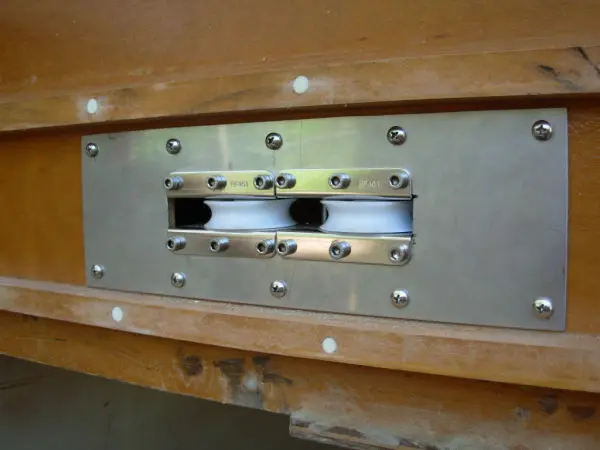Catamaran Steering
Catamaran or sailboat steering systems, have you ever tried to locate information? This steering system did not form part of our design plans and much effort was put into its design for obvious reasons.
We have gone into much more detail on this, our reasons and their associated drawings in our Catamaran Building Adventure Book, from the sizing of the steering cog, to the linking of the cables.
Attached are the end products of our steering drawings, from the 'helm wheel' through to the 'rudder arm'. The whole system will be connected with cable and tensioned with turn-buckles. Very simple, no hydraulic fluids, leaks or pumps needed.
The 'sheave boxes' are common products that have been installed with the thought of replacement, in the back of our minds.
Therefore their positioning and securing is all accessible once the yacht is finished. The cables exit from the aft frame and are secured to the 'rudder pole'. The 'rudder pole' extends the full length of the aft beam and is in turn connected to each rudder arm (the components atop the actual rudder pole and rudders).
The 'rudder pole' is covered to protect it from the elements, water ingress and little boys who think they are Tarzan.
A hatch has been cut to provide full access to the aft steering sheaves and connection points on the rudder pole.
